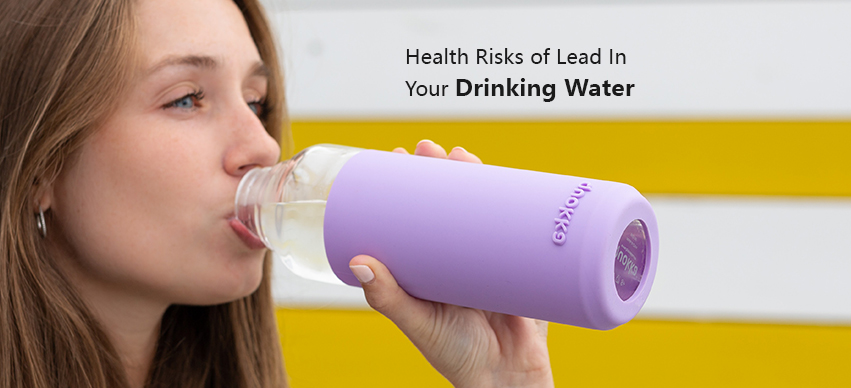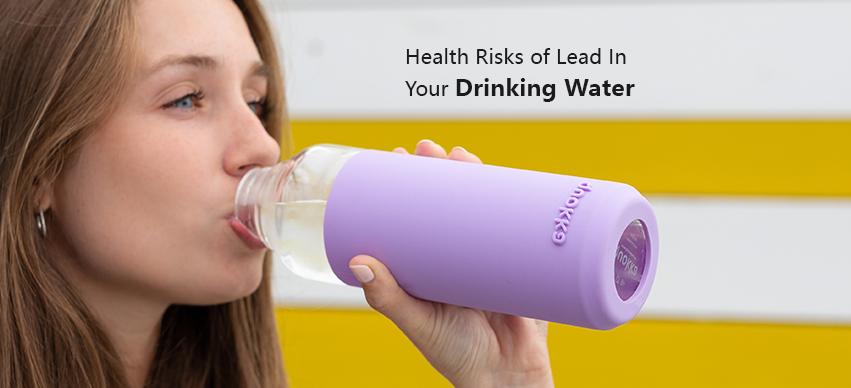Everyday Habits That Can Protect Your Eyes from Damage
4 Min Read


Among the seriously terrible metals present in our drinking water, one well-known enemy is lead. In safe levels, it would pose no threat to mankind. However, beyond a certain level, the associated health risks increase substantially. Lead is known to mix up with the drinking water after the plumbing materials consisting of lead start corroding.
It is especially true in places with low mineral concentration or high acidity that leads to fixtures and pipes corrosion. Homes that include lead service lines are a significant source of lead pollution in water. To tackle this poisonous metal, you need the best water purifiers by makeachoice.in.
But, what exactly are the risks associated with lead mingling with your drinking water?
Let us decode this in detail.
As per the SDWA or Safe Drinking Water Act, the maximum amount of lead content allowed to be present in water is 0.25% across wetted surfaces such as pipe fittings, pipes, fixtures, & plumbing fittings. On the other hand, the number is 0.2% for flux and solder.
There are several factors that come into play with regard to water pollution caused by lead. Here are the common ones;
When it comes to lead exposure from drinking water, the ones at maximum risk are infants, young children, as well as fetuses. Not just that, the behavioral and physically altering effects of lead affect children more than adults. Among children, lead exposure in low levels has been linked to damaged peripheral and central nervous systems. It could also lead to shorter stature, learning disabilities, impaired hearing, & impaired blood cell functioning.
The CDC also recommends that health protocols must be initiated as soon as the lead level in the kid’s blood reaches 5micrograms/deciliter (µg/dL) or higher.
It is also important that you decode the means via which the children might be vulnerable to lead exposure. Children could put lead within the body via dust, paint, air, soil, food, & drinking water. However, drinking water makes about 20% or higher of the total lead exposure.
Even a fairly low level of lead exposure in children could lead to issues such as;
In certain rare cases, lead exposure could lead to coma, seizures, & even death.
Lead is known to accumulate within the body with time. It is gradually stored within the bones along with the calcium we regularly intake with food and water. During pregnancy, this lead is liberated from the bones in the form of maternal calcium to aid with fetal bone formation.
It is more the case and point for pregnant women that lack enough calcium in their diet. That is how lead within a pregnant women’s body could pass on to the fetus. It might result in dangerous repercussions for the fetus as well as the mother, such as;
As harmful as lead is for children, it could do irreversible damage to adults as well. Adults that are exposed to any type of lead contamination might suffer from;
The short answer to this question is yes. Showering or bathing is considered safe in water exposed to lead content. It is also true for children as our skin doesn’t actually absorb the metal present in the water. However, there might be instances of allergies in certain individuals in higher concentrations. So, it is advised that you talk to your physician before trying this out.
In order to determine whether your water has been contaminated by lead, you need to check the plumbing material first. In case you have lead-based material in the pipes, the key is to replace them with safer options. You can also hire a qualified and skilled plumber to help you determine the same.
The best way to go about it is to have your water tested at the local laboratory and order and purifier to deal with the issue. An RO purifier with UV can help tackle the lead poisoning issues with ease without the need for heavy investments.
From developmental delay to irritability, lead is something that could mess up you and your family’s health. The sooner you become aware of this fact, the easier it would be to tackle the same. Keep in mind that hot water could lead to a higher level of lead leaching into your drinking water. So, try and stick to cold water pipelines and boil the same as needed on your stove. Make sure you opt for regular replacement of your pipeline and fittings while using a high-quality water purifier to evade any lead contamination in the future.